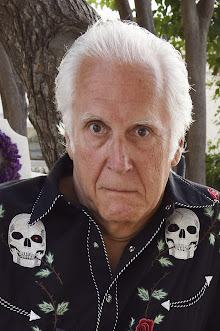Well, Christmas is
over and January always seems a bit of a lacklustre month. The days are
starting to lighten fractionally, but I know full well that we have not yet
seen the coldest part of winter. Even if the daffodils are somewhat optimistically poking up green shoots, spring seems a
long way off.
It’s not just the
length of the days, however, it’s the quality of the light when it does finally
put in an appearance. Dull and gloomy, requiring a desk lamp even at midday,
and the fire lit by three o’clock in the afternoon.
The roads are
perpetually plastered in mud, and so are the sides of my car. The bike is
tucked away in the garage. There’s rain on every forecast, and if we make it
through to March without snow it will be a first. In fact, as I write this the
news is predicting snow and sub-freezing temperatures in the next week.
Perfect time of year,
then, to be curled up inside, next to the aforementioned fire, with a book.
And I’ve been doing
plenty of reading, both for research and for pleasure.
It’s also a good time
to be indoors writing a book. I have
a full schedule of work ahead of me that should last well past the rough
weather and into the smooth. I’ve recently invested in a daylight lamp to
banish the winter blues while I’m at my desk, and I’ve rediscovered one what
has been in the past my strongest writing tools.
Music.
Although I no longer
have my CD collection, I do have an external hard drive with most of the music
contained on them loaded onto it. And in a lot of ways that’s even more
conducive to writing. I’ve created a playlist of all my favourites, which I
play in full Shuffle mode. Hours of music without having to get up to change a disc!
The segues from one style to another are sometimes startling, but as these are all
my favourites, there’s nothing I don’t like.
Some people have to
have a place of tranquillity and complete silence while they write. Others can
work quite happily in a busy café with all kinds of hubbub going on around them.
Back when I still had a day-job as a photographer, I used to get a lot of
scribbling done in the car on the way to shoots. Music on the car stereo, and
no distractions of the Internet, or just nipping to the kitchen to make another
brew.
(I was in the
passenger seat for most of these trips, I ought to add, just in case you were
wondering.)
I’ve always found that
music conveys atmosphere almost instantly. It’s why it’s the constant backdrop
to movies, TV and advertising. What would James Bond be without that
distinctive John Barry score?
Or Jaws without the foreboding John
Williams music to go along with it?
Cyndi Lauper’s ‘True
Colors’ has found its way into many adverts as well as an anti-bullying
campaign because the melody is as haunting the lyrics.
When I first heard
Rachel Platten’s ‘Fight Song’, there was something about her voice from the
moment she starts to sing. But as she goes into the chorus, it brings the hairs
up on the back of my neck, the prickle in my chest. Instant emotion.
And I’ve been watching
quite a bit of freestyle Grand Prix dressage recently, including the qualifier
for the 2016 Olympics which was held at Olympia in London just before Christmas.
But this older test by Edward Gal of the Netherlands, on the great Moorlands
Totilas shows how music can emphasise and accentuate something that is already
stunning. They call it dancing horses, and you’d swear the horse is listening to
and keeping time with the music.
For me, listening to
music while I write helps me to plug straight into an emotion or the kind of
atmosphere I want to create. As long as the music is on low enough that it
permeates my brain on an almost-subliminal level. I’ve found I can’t work well
with headphones. It’s too immediate. I need a little distance in order for it
to have its greatest effect.
What about you? Do you
listen to music while you write, or work, or do you prefer the sound of
silence? And, if you listen while you type or scribble, what are your favourites?
This week’s Word of
the Week is cuckquean. I hadn’t come
across this before, although its male equivalent, cuckold is far more common. Where a cuckold is the unwitting husband of an adulterous wife, so a cuckquean is the unwitting wife of an
adulterous husband. Both have their roots from the cuckoo bird, which lays its
eggs in other birds’ nests and leaves them to bring up young not their own.
Sometimes shortened to cuck, it came into
use in the mid 13th century. The important part is that the spouse
should be deceived. A related word, for instance, is wittol, meaning a man who is aware of his wife’s infidelity and
accepts it.















